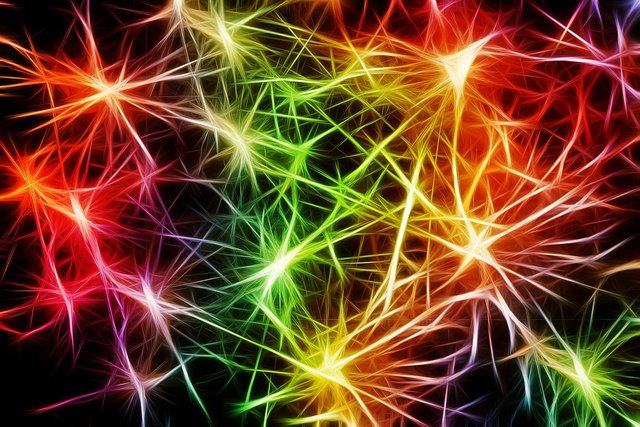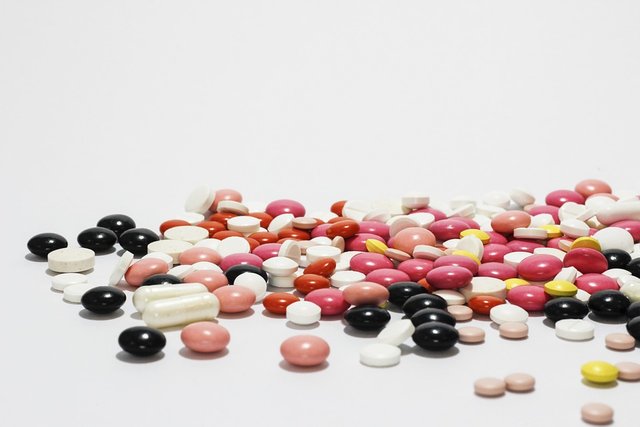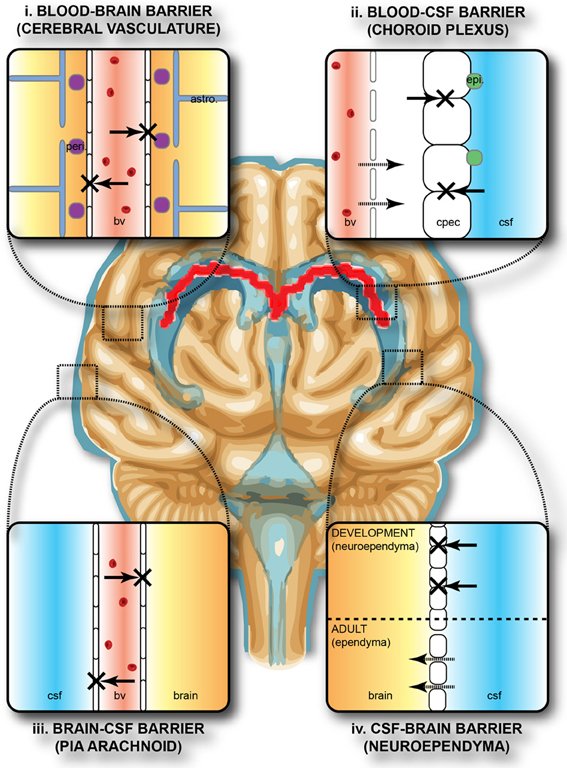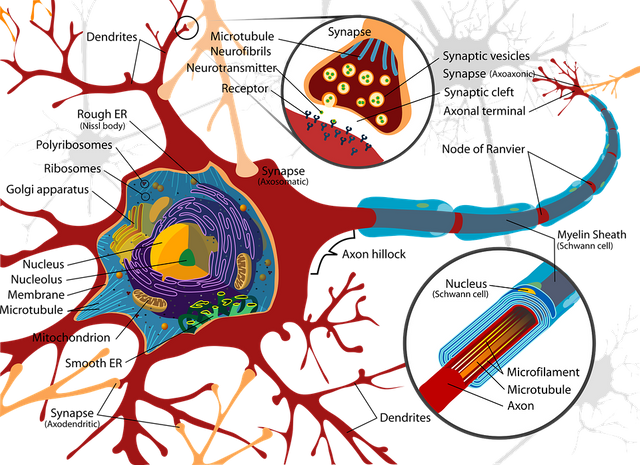Brain myths and neurotransmitters
Recently I wrote a post about coffee where I tried to summarize what are its effects on the brain. Based on the comments I received on that post I realized that I conveyed a message that may be misunderstood. Some users, in fact, thought that to get an effect in the brain things are as simple as injecting a drug or a compound in the brain and that’s it. They are not alone, there are several people even in the scientific community that think that neurological disorders are simply the result of chemical imbalances in the brain. If it was simple, for sure we would not have an entire field of neuroscience dedicate to study neurochemicals, this field is called for obvious reasons: neurochemistry.

But how did we get here? For the joy of @lemouth I am going to talk about another serendipitous discovery, this time nobody was poking a star-fish with thorns, but someone was simply injecting human urine in guinea pigs.
Ok, if I say it like this it sounds weird, let me give you some context. In 1949, in Australia, John Cade was studying psychotic disorders. He thought that there must have been a chemical in the brain that was messing up his patients. If his hypothesis was true, for sure there would be traces of this chemical in the urine of his psychotic patients. So, he decided to test this hypothesis by injecting urine of psychotic patients into guinea pigs. He found that guinea pigs that received urine from psychotic patients were more likely to die compared to other guinea pigs that received urine from healthy people (CADE, 1949). Among the chemicals that could be found in the urine of psychotic patients there was Lithium urate, “that must be it” thought John Cade. He thought that Lithium urate was responsible for neurological disorders, so he decided to inject some of it into more guinea pigs, expecting to see them die as the others did. Instead, they just chilled out.

The guinea pigs that received lithium urate became just very lethargic and unresponsive to stimuli (CADE, 1949). John Cade just found out by accident that lithium can calm down patients. Even today we still use lithium to treat patients with bipolar disorder, even if we still don’t fully know how it works (Berk, Cowdery, Williams, & Malhi, 2017).
Another accidental discovery in the field of neurochemistry was that of chlorpromazine. In 1951, Henri Laborit, a surgeon in the French navy, was using chlorpromazine as a surgical anesthetic, but pretty soon he realized that patients that received this drug were strangely calm. More scientists then decided to test the effects of chlorpromazine especially on patients with schizophrenia. It was much more effective in relieving hallucinations and at calming uncontrollable patients without knocking them down (making them unconscious) (Rosenbloom, 2002). This discovery had deep repercussions in the field of psychology. It caused a shift from treating psychotic patients in hospitals to administering them drugs. It was a first step towards connecting the dots between mental illness and neurotransmitters and receptors (Rosenbloom, 2002).

However, today we know that things are very complex and describing mental illness as a mere chemical imbalance it would not be exact. If that was the case depression could be cured simply by restoring the levels of serotonin and schizophrenia could be cured simply by stopping uncontrolled release of dopamine.
The brain itself cannot really be compared to the rest of the body. In fact, compounds that are great for the body may not be so good for the brain. Even the immune cells are not allowed roam as freely in the brain. That’s because immune cells can kill the infected cells, if they were to kill neurons it would cause great issues, so we evolved the blood brain barrier. Trump would call it “a wall”, but it’s basically a biological barrier that prevents compounds, cells, bacteria and viruses to move freely from the body to the brain. Have you noticed how rare are infections in the brain? However, this barrier is a problem for pharmaceutical companies as most drugs we assume cannot pass through the blood brain barrier. Only small macromolecules can get through.

Caffeine for example is able to “sneak in” because it’s quite small and it is also similar to adhenosine, a molecule found in abundance in the brain. Alcohol instead, manages to get through because of its electrochemical properties.
Earlier we mentioned the neurotransmitters. They are responsible for transmitting messages in the synapsis. Here we basically have an axon terminus, a neural projection. When an electric wave (action potential) arrives at the axon terminus, it causes and release neurotransmitters in the synapsis. Here the neurotransmitters interact with the receptors on the surface of the dendrites, which are a portion of the receiving neurons.

The brain is not the only part of the body that has barriers, cells have barriers too. In fact, they use a membrane to isolate themselves from the surrounding environment and to create and maintain conditions that are optimal for the smooth running of the cellular machine. For instance, the cytoplasm of each cells is negatively charged. When a neurotransmitter interacts with a receptor, it causes a cascade of signals that may results with the opening of some “gates” on the cell membrane. This allows the movement of ions from outside to inside the cell, altering the cellular environment. If the cytoplasm of a neuron becomes enough positively charged it could trigger the formation of a new action potential, with the consequent release of more neurotransmitters from the axons and the propagation of a signal.
However, we must say that the same neurotransmitter can interact with different receptors, thus causing opposite effects. For example, dopamine can bind to at least 5 different types of receptors that are distributed differently in each region of the brain. For this reason, dopamine will have different effects if released in the pre-frontal cortex or in the striatum.
I know things are getting complicated. I will end this post by busting a myth but first I have to throw a bit more science at you, get ready.
Most neurotransmitters are small molecules that can be easily synthesized by the brain cells. In fact, most of them are actually just amino acids with few extra bits. For example:
- Dopamine
- Epinephrine
- Norepinephrine
- Adrenaline

Dopamine molecule - Image Source
These are all mono amines and they are all derived from the amino acid Tyrosine. Or for example:
- Serotonin
- Melatonin
These are neurotransmitters that regulate sleep and derive from the amino acid Tryptophan. And here there is our myth. The rumor says that Turkey meat contains plenty of Tryptophan, which according to the myth will make you feel sleepy. So, turkey meat is often blamed for making people feel sleepy, especially after a big Thanksgiving meal. Does that ring a bell?

Don’t mind the fact that people probably are engulfed with all sort of food, or the endless streams of wine…do you really think that is the turkey’s meat that makes you sleepy? Well, then how do you explain that actually chicken meat contains more Tryptophan than Turkey? Do you feel sleepy too when you devour your chicken wings?
Talking about food, itastem has a logo for you:

Logo created by @gianluccio
References:
- Berk, M., Cowdery, S., Williams, L., & Malhi, G. S. (2017). Recalibrating the risks and benefits of lithium therapy. The British Journal of Psychiatry : The Journal of Mental Science, 211(1), 1–2. https://doi.org/10.1192/bjp.bp.116.193789
- CADE, J. F. J. (1949). Lithium salts in the treatment of psychotic excitement. The Medical Journal of Australia, 2(10), 349–52. Retrieved from http://www.ncbi.nlm.nih.gov/pubmed/18142718
- Rosenbloom, M. (2002). Chlorpromazine and the Psychopharmacologic Revolution. JAMA, 287(14), 1860. https://doi.org/10.1001/jama.287.14.1860-JMS0410-6-1
- Book: Neuroscience 5th edition
A very good article!
This may also explain the pharmacokinetic effects that cause drugs from different manufacturers with the same main ingredients to act differently. Especially in the field of antidepressants there are very strange effects. Some patients are more responsive to the original product, while others are much more responsive to a generic medicine. Generics? In Germany, there is a promotional jingle with the question in the pharmacy: "... or is there something from Ratiopharm".
The secret is the so-called carriers, ie the substances that are to transport the main active ingredient. What is rather simple with aspirin becomes a lottery game with psychotropic drugs, because the carriers are not given anywhere.
Just my 2 cents.
Kind regards
Jawas Dennu
There is still much we don't know about how some molecules can get into the brain, surely there seems to be a lot of different responses in patients for the same drug, this also highlight the current limitation of administering drugs with standard doses for all patients, custom dosing would be optimal
Hey thanks for educating the public on the Turkey Tryptophan Sleep myth! I tell people don't worry about turkey making you sleepy as Mozzarella cheese on your pizza has almost more 3 times the amount of Tryptophan (by weight) and that doesn't make you sleepy lol.
There are still many more myths to deal with, we will get rid of them one at the time :)
Really interesting article... I didn't know of the brain blood barrier, that explains a lot about the "resistance" of the brain to infections :) Oh, and thanks for using my itaSTEM logo! ;)
Thank you for making the logo, it's so cool I had to use it!
Thanks for a very interesting article. It seems to me that the brain is a chemically induced electrical network made up of specialised cells and is obviously very complex.
I don't pretend to understand any more than the average lay person but am fascinated by the possibility that we may eventually comprehend the brain's innermost workings.
You say that the brain can easily manufacrure neurotransmitters yet depression is due to, or at least linked to, reduced levels of serotonin so how does this problem occur I wonder? Why does the brain not produce enough? And increasing serotonin seems to work in many cases to relieve depression, by means of SSRI drugs, and such like, so this would tend to support the theory that mental problems are down to some sort of imbalance perhaps?
Thank you for your comment, I think chemical imbalances in the brain are only part of the problem, most people think that it is the only problem. I think this topic deserves more posts, I will try to write more about it.
The easiest way to remove your blood brain barrier is a cell phone call.
Unfortunately.
https://www.ncbi.nlm.nih.gov/pubmed/19345073
So, while we read this, is our's closed? Or open?
thanks for this post, have so much good information
It was a interesting and great article !
@aboutcoolscience : great article. Was treated for bipolar disorder. Still takes valporate medicines. Following you. Resteeming and upvoting. Will you write about sodium valporate too?😃
Thank you, there are so many things to write about, I have a long list of posts to make but if that interests you I will consider writing about it
great article mate, glad ya throwing more light and bringing awareness on this issue. by the way am a medical student . hope to catch up with you on more articles
Thanks and I hope I'll see you around
I usually feel sleepy after i devour chicken wings now i know why. great post
Thanks! Sometimes I wonder where do they get all those wings..